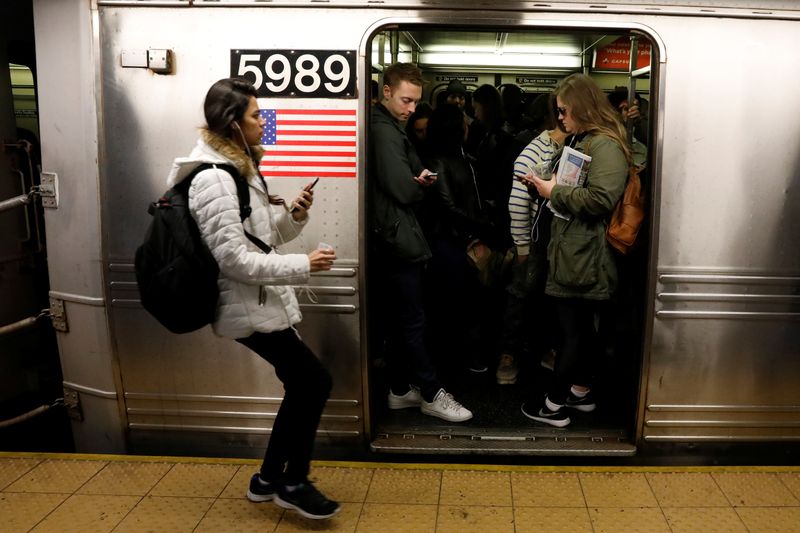NEW YORK (Reuters) – Only one in five commuters in mass transit-dependent New York City will be able to reach their office under the six-foot social distancing protocol due to the coronavirus pandemic, according to commercial real estate broker Savills Plc.
Almost 2 million people daily used the subway, commuter rail lines or buses to reach their jobs in Manhattan before New York state shut down non-essential business in March, Savills said in a report detailing a big obstacle for companies to bring workers back to the office as work-from-home restrictions are lifted.
Staying compliant with public safety norms in particular will push the city’s subway system, which is normally used by 1.3 million commuters every day, beyond capacity, said Kevin Kelly, a senior managing director who wrote the report for Savills, a leading broker in global commercial property sales and leasing.
The report was written specifically about New York but is relevant for other large cities hobbled by the pandemic and where mass transit accounts for a majority of commuter travel.
Kelly called mass transit an enormous barrier to getting people back to work in Manhattan, where the car is only used by 12% of workers commuting to jobs in the U.S. financial capital.
“The biggest bottleneck is mass transit because there’s simply no good way to get people into an office in Manhattan avoiding public transit,” said Kelly, who in a prior job helped with the spatial analysis of how disease spreads geographically at the Public Health Department of Epidemiology in Los Angeles county. Understanding where people are and how they are likely to travel is critical when studying commuting, Kelly said.
The mass transit constraints will force more employees to continue working from home as companies decide how best to return to offices that until a coronavirus vaccine is found need to be less dense with new rules for everyday office etiquette.
Temperature screenings in lobbies, abundant hand sanitation dispensers and one- or two-person limits in elevators are some of the changes awaiting employees on their return to the office.
“The subway and mass transit are a huge variable as we start to think about coming back to work, and there really isn’t any simple answer that any one business can fix,” Kelly said in an interview.
The Metropolitan Transportation Authority, which operates the subway, city buses and two commuter rail lines, is hiring 100 monitors to check for overcrowding on trains and to ensure stations are functioning properly, an MTA spokesman said.
The MTA also is waiting for guidance from public health authorities and has reached out to other mass transit systems around the world to glean best practices to ensure public safety, the spokesman said.
Public transportation is limited in New York during the pandemic for essential business or urgent medical appointments. On May 6, subway service will be halted daily for five hours starting at 1 a.m. so trains and stations can be disinfected.
“Stay home if you can,” the MTA advises.
While a common subway train with 10 units typically moves up to 2,000 people at once, under social distancing that number shrinks to 200, or about what one car carries during rush hour, Kelly calculated in the report Savills published on Wednesday.
The number of people who will be needed to regulate how many commuters travel in each subway car is another concern, he said.
“Just the mechanics of that alone is pretty wild,” Kelly said.
(Reporting by Herbert Lash; Editing by Alden Bentley and Jonathan Oatis)

















